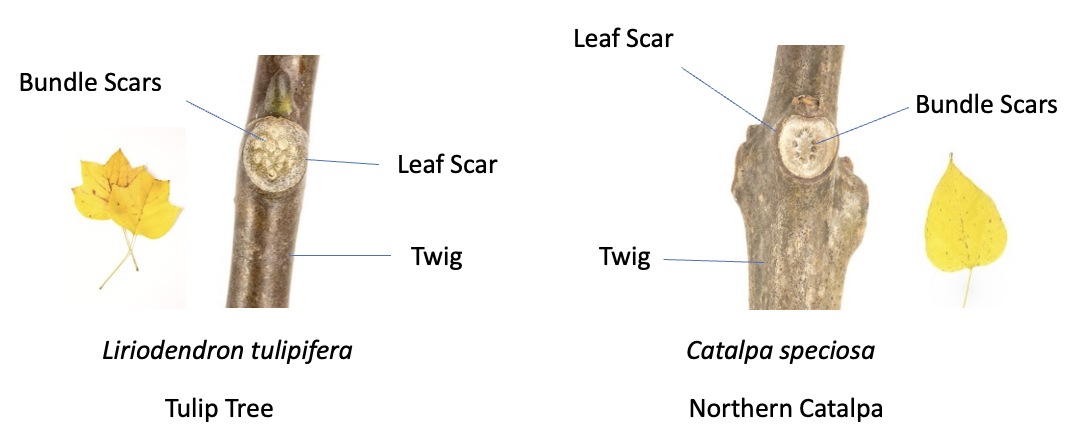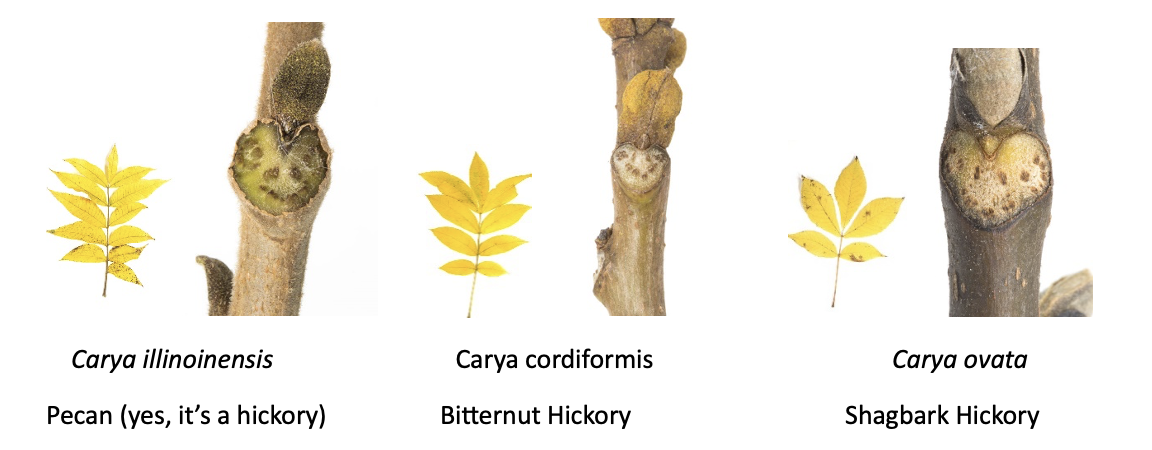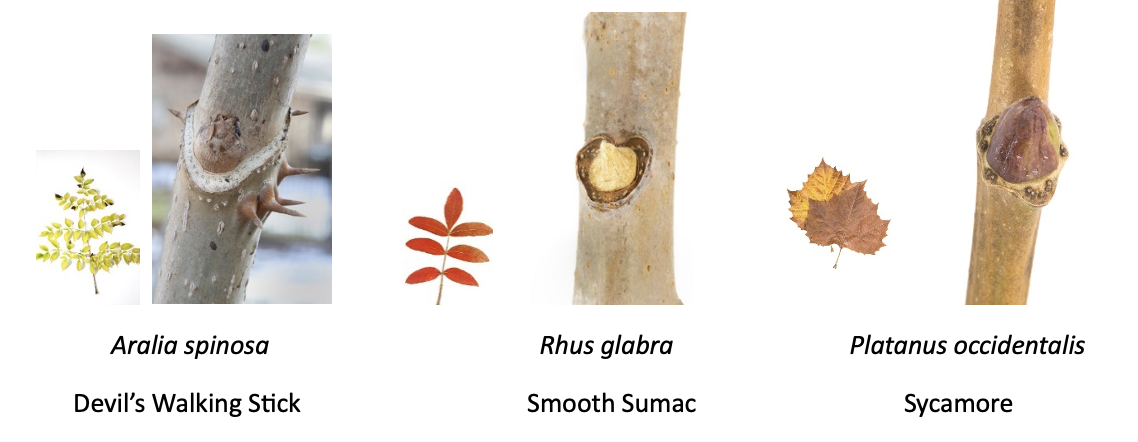The Fingerprints of Leaves
The Fingerprints of Leaves

In previous newsletters, I described my ongoing project of photographing various aspects of The Arboretum’s outstanding collection of Kentucky native tree and shrub species. Their colorful autumn leaves are falling at this time of year, as temperatures drop and daylight hours shorten.
When each leaf releases its hold on a twig, a “fingerprint” of it remains behind. Botanists refer to this distinctive mark as a leaf scar which is unique to a species, and like a human fingerprint, can be used for identification. The leaf scar is very helpful but also are the marks from broken vascular tubes inside it, termed bundle scars. Those tubes transported water and nutrients to the leaf prior to its separation.
At the outset of the project, I anticipated photographing the winter form, bark, buds, flowers, fruit, leaves, and summer form of the trees and shrubs. My discovery of their leaf scars, however, was completely unexpected. Who knew these existed? No one in a random sampling of friends! By sharing the photos in this article, I hope to show their usefulness in determining a species in winter when there are no observable leaves. I think of them as little badges advertising their identities as well as diminutive visual curiosities for nature enthusiasts to check out.

I learned leaf scars come in a variety of shapes. Each exactly matches, of course, the end of a leaf stem where it detached. Those of the tulip tree and catalpa pictured above are two of the few round ones found on Kentucky trees. The tulip tree leaf scar has a cluster of multiple bundle scars inside it, while the catalpa bundle scars form an oval pattern.
After I photographed several leaf scars from species in the same genus, I noticed they had similarities. The Acer or maple ones seen below are V-shaped, partially wrap around a bud, and contain three bundle scars or groups with subtle differences.

The following Carya or hickory leaf scars are heart-shaped with bundle scar patterns that resemble creepy faces! Trees and shrubs with large simple leaves or compound leaves have bigger scars like these.

I was surprised to find some species have a leaf stem end that completely wraps around a developing bud as shown in the next photos. After the tree or shrub discards the leaf, the scar looks like a necklace strung with jewels. The bundle scars are the “jewels.”

Oval, bucket-shaped, kidney-shaped, and shield-shaped leaf scars appear below. There are many other designs, but too little space to present them!

 The butternut tree deserves the most outstanding leaf scar distinction. Its scar and bud form a monkey’s face with fuzzy eyebrows and a funny hat on top, proving that Nature is amazing and has a sense of humor!
The butternut tree deserves the most outstanding leaf scar distinction. Its scar and bud form a monkey’s face with fuzzy eyebrows and a funny hat on top, proving that Nature is amazing and has a sense of humor!
Some woody plants seem eager to shed their leaves early like buckeye, sumac, and ash. Some are tardily deciduous, retaining them into the new year like beech and some oaks. My experience is most leaves are attached with Super Glue-level strength until they are good and ready to let go, whenever that is. Leaves must drop off naturally, not be picked, for their leaf scar features to clearly display themselves. I easily found “fingerprints” to photograph all the trees and shrubs as they became available and visible throughout the fall and winter months.
